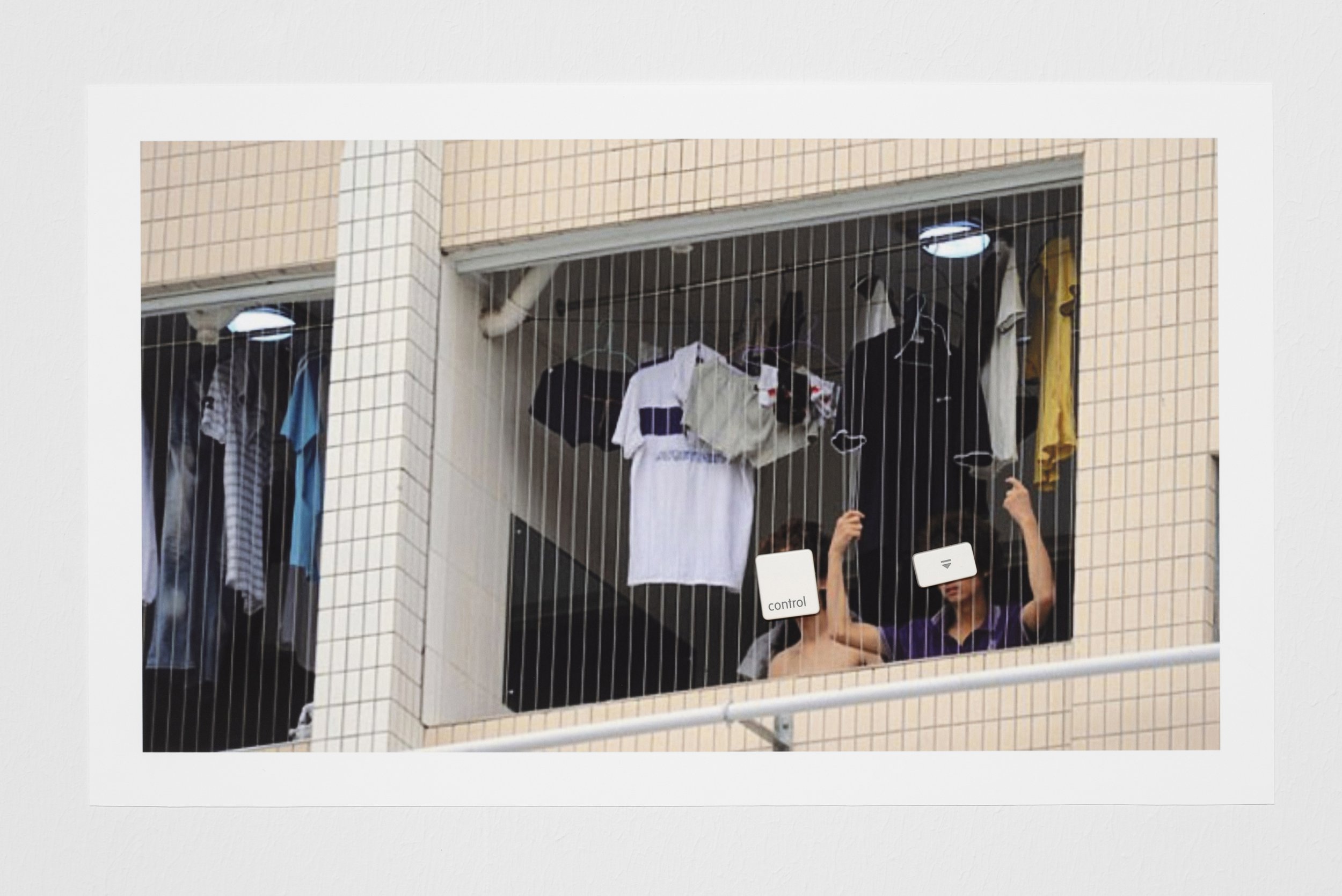MARYAM JAFRI
Lithium Balance
April 11 - May 18, 2024
Opening Reception
Thursday, April 11, 6-8pm
"Caps Lock Clinic" (detail view of the installation No Lithium, No Work)
Archival inkjet photo, laptop keyboard bezel, key cap
6¾ x 11¾ x 1 in. 17.14 x 29.84 x 2.54 cm
Detail view, from the installation:
No Lithium, No Work (2023) Mixed media installation (wooden display table, photos, texts, objects, video, iPad, iPhone), Maryam Jafri
The above image is a photograph (1949) of a mental hospital for WWII veterans in Australia where lithium carbonate was first developed as a treatment for bipolar disorder, a milestone in psychiatric history. Over the image, Jafri has placed a black keyboard frame and the “caps lock” key from a discarded laptop.
Following her single work exhibition “ Independence Day, 1934-1975”, Maryam Jafri presents Lithium Balance, opening on Thursday, April 11th. The centerpiece installation No Lithium, No Work (2023) explores lithium’s dual life as a principal medicine for mood disorders and as the main component in rechargeable batteries underpinning everything from smart-phones, to electric cars, to solar panels.
The installation No Lithium, No Work (2023), situated in the front entrance room, simultaneously pared down and yet also expansive, weaves together the imaged yet interdependent worlds of mental health, global economies from both the production and consumption ends, and cultural history. We witness factory workers assembling lithium-powered smartphones and laptops threatening to jump to their deaths rather than work another day for Apple or Dell to burnout, depressions, and suicides by members of the creative class, all to the silent tunes of Glenn Miller’s “Smooth” album sponsored by a pharmaceutical company and Nirvana’s “Lithium” Additional installation elements include photos of Dell factory workers threatening a mass suicide action on a rooftop, a wireless keyboard spelling the words “Help Me”, and a pill organizer spelling out the words “IM NOT WORKING”.
In the second room, we are presented with the video Screen Culture (2024) focusing on e-waste and informal workers in the Global South, and the text-based works Hang The Man (2024) and Loop/Doom (2024) made out of cardboard and discarded keyboard keys.
On view in the third and final room is the work Three Clipboards (2024), juxtaposing pharma-branded pens for lithium medications with printouts of peer- reviewed articles from scientific and public-health studies revealing the benefits of lithium carbonate, whether it ought to be added to our water supply to lower suicide rates or its status on the World Health Organization’s list of essential medicines.
The namesake of the exhibition Lithium Balance refers to a company that provides lithium-battery management solutions for industrial-scale applications, but which also unconsciously echoes the longer psycho-pharmacological history of lithium carbonate. In its unsparing examination of the nexus between the suicidal and the digital, cutting across disparate geographies and social groups, the exhibition underscores the definitive yet labyrinthine relationship between individual symptoms and collective crises.
Maryam Jafri’s multimedia practice integrates video, sculpture, photography, and installation. Recent solo presentations include No Lithium, No Work at Kunsthal Aarhus, DK (2023), A Broad and Narrow Point, Blaffer Museum of Art, Houston, TX (2021), I Drank the Kool-Aid but I didn’t Inhale, ICA Los Angeles, CA (2019), and The Road to Serfdom, Repaved, Taxis Palais Kunsthalle Tyrol, AT (2019). Recent biennials and notable group exhibitions include to see oneself at a distance, MASS MoCA, North Adams, MA (2023), Blocks, Museum of Contemporary Art, Palermo, IT (2021), Front International Triennial, Cleveland, OH (2018), Athens Biennial, GR (2018), São Paolo Bienniale, BR (2016), and the Belgian Pavilion, Venice Biennale, IT (2015).
installation view at Kai Matsumiya
installation view at Kai Matsumiya
installation view at Kai Matsumiya





















